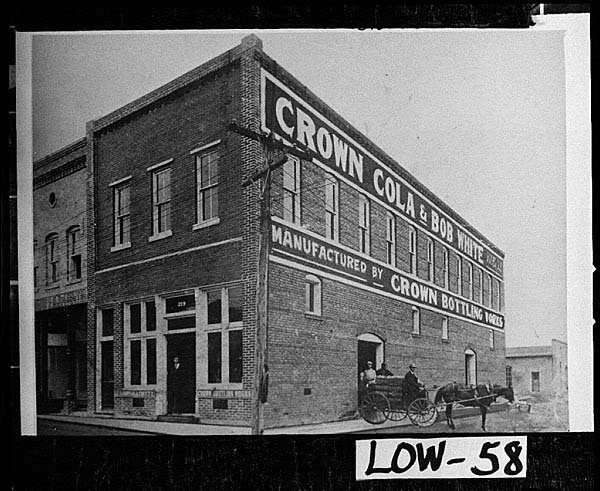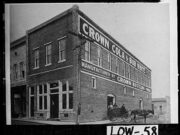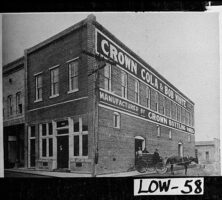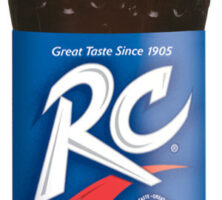Columbus-based Royal Crown Cola Company (RC), although never as renowned as its rival Coca-Cola, used the soft-drink industry’s first taste tests to prove that it was a superior soda. Forever linked to a popular marshmallow-filled snack treat through the country song “RC Cola and Moon Pie,” the company never shook its strictly southern, small-town image, even though it unveiled a series of industry firsts, including the first aluminum cans, the first diet cola, and the first caffeine-free diet cola.

Courtesy of Georgia Archives.
A young pharmacist named Claud Hatcher developed RC as a bottled drink in 1905 to sell in his family’s grocery store. After customers clamored for the drink, the family expanded into the soft-drink business, starting Union Bottling Works. Its best-selling product, Chero-Cola, helped the company grow so rapidly that by 1920 it had 700 franchise bottling plants. Known as the Chero-Cola Company, it faced a lawsuit from Cola-Cola, which insisted on exclusive rights to the word “cola.” High legal bills and rising sugar prices forced the company to drop “cola” from its name in 1923.
When the market for Chero dropped off, the company discontinued the beverage, pushing forward with a fruity soft drink called Nehi instead. Chero became Nehi Corporation in 1928. In the midst of the Great Depression of the 1930s, Nehi began to struggle; competition and lackluster sales made it hard for the company to pay its bills. Hatcher died in 1933, and H. R. Mott took control of Nehi, dropping poor-performing drinks and streamlining operations to make the company debt free in a year. Mott’s plan included taking the original Chero-Cola and reintroducing it. The new Chero-Cola, released in 1934 and named Royal Crown after Hatcher’s first drink, was a big hit, and in the late 1950s the company changed its name to Royal Crown Cola Company. (Courts ruled in 1944 that the company could once again use “cola” in its name.)

Courtesy of Cadbury Schweppes Americas Beverages
Mott was replaced by C. C. Colbert as president and chief executive officer in 1940. In that year, Nehi sales were ten times what they had been less than a decade before, RC products were available in nearly every state in the nation, and its advertisements appeared in such publications as the Saturday Evening Post and Good Housekeeping. Actors Lucille Ball, Claudette Colbert, Joan Crawford, Ronald Reagan, Shirley Temple, and Loretta Young were among those endorsing RC as “Best by Taste Test.”
The company continued to grow, and in 1954 it became the first beverage company to nationally distribute soft drinks in cans. Shortly thereafter, in 1959, RC became one of the first to introduce the sixteen-ounce bottle. The company produced the first low-calorie diet cola (Diet Rite), the first caffeine-free diet cola (RC 100), and the first diet cherry cola (Diet Cherry RC). Yet despite such innovations, Royal Crown products reportedly reached only 2.5 percent of the soft-drink market in the mid-1990s; Coke was the leader with about 43 percent, just ahead of Pepsi, which had about 31 percent of the market share. Today, none of the top-ten-selling soft drinks are Royal Crown products.
RC Cola was bought in October 2000 by the British company Cadbury Schweppes. Its U.S. operations continue under Cadbury Schweppes’s largest beverage subsidiary, while its international operations are handled by Canada’s Cott Corporation.






